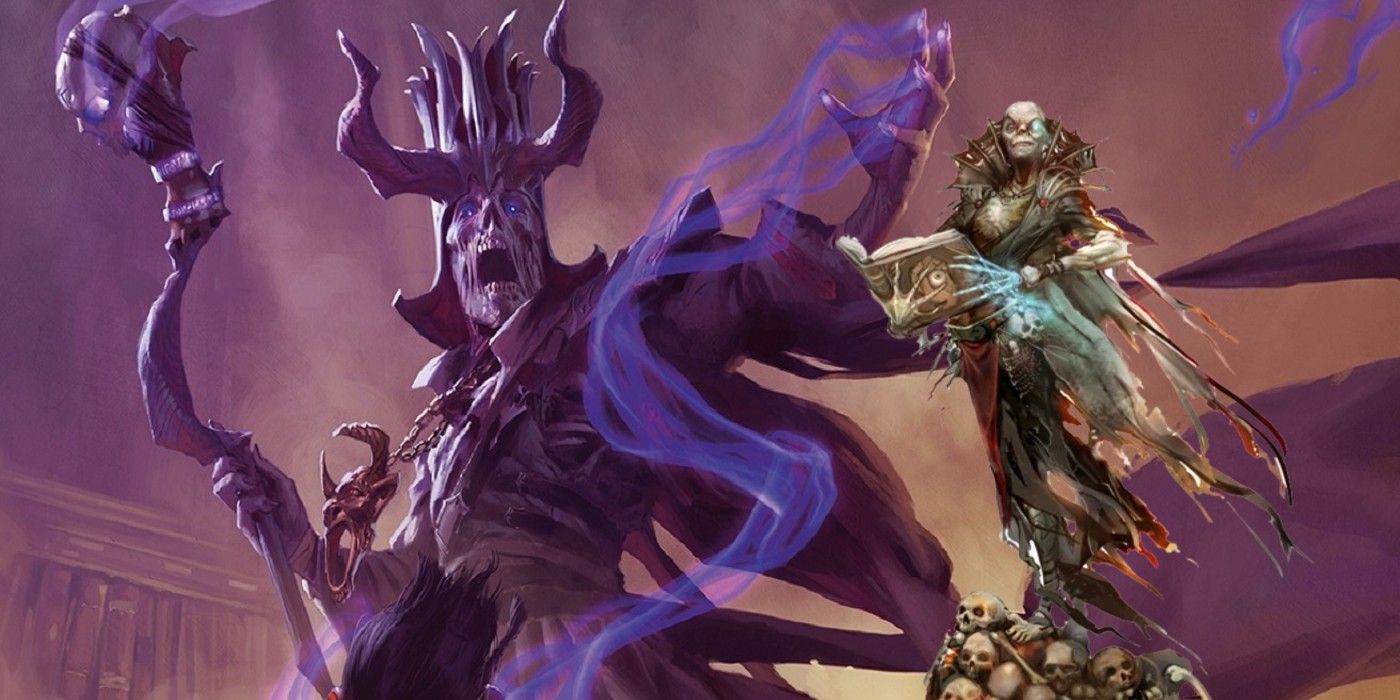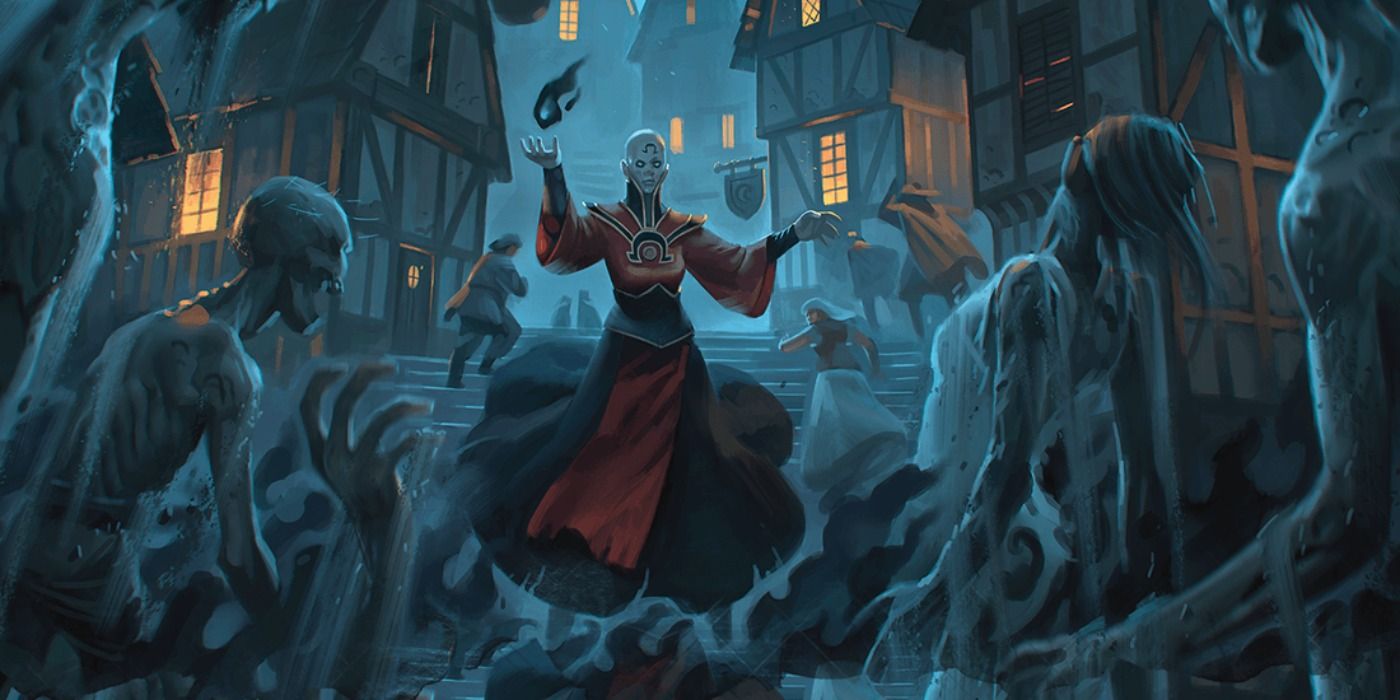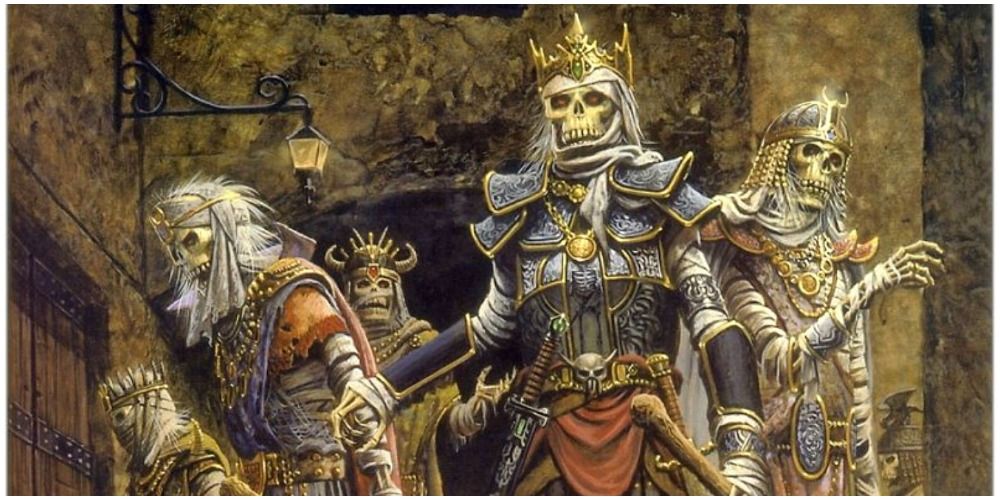Liches are one of the most terrifying foes a Dungeons & Dragons party can face, as they often have access to D&D's most powerful spells, but there are good ones out there too. Only the evilest of individuals would consider becoming a lich, as the process involves transforming into an undead mockery of life. The Dungeons & Dragons multiverse is a big place, however, and there are some good and neutral liches out there, with powers that match that of their evil contemporaries.
The majority of the undead foes that the D&D party will face are mindless creatures who exist only to snuff out life. The skeletons and zombies that a low-level party can face are stitched together by pieces of negative energy, while the incorporeal undead are the manifested shadows of living beings. One of the reasons vampires are so feared is that they not only retain their intelligence, but they can walk among humans at night while obscuring their true nature. Count Strahd from Dungeons & Dragons' Curse of Strahd might be a blood-sucking monster, but he can also be courteous, cunning, and even charming in his own way.
Liches are the most dangerous intelligent undead, as they willingly became undead in order to become masters of magic, without needing to worry about dying of old age, or being slowed down by biological needs. The generic lich depicted in the Monster Manual is a CR 21 creature, which can throw out a power word kill on the first round of combat, before using its Legendary Actions to inflict status effects on the party members at the end of their turns. The average lich encountered in a D&D campaign (if there is such a thing) is an evil master of the arcane arts, yet there are some good and neutral versions of the lich in the multiverse.
Turning Into A Lich Is A Way For D&D's Evil Casters To Cheat Death
Death is not the end in D&D. A D&D character can be revived through magic spells, like raise dead or resurrection, but that's only if they die before their time. A character who dies from old age cannot be brought back, as they have reached the end of their lifespan. There are ways to extend this lifespan, such as by drinking potions of longevity, but even these can only be used a limited number of times. It's possible for a D&D character to become immortal, either through gaining divinity and becoming a god, or through the use of the wish spell, but these come with dangers of their own.
There are some evil spellcasters who seek another way to cheat death, or at least postpone it for a very long time. It's possible to become a lich, which is a form of intelligent undead that retains the spellcasting abilities it had in life. The process of becoming a lich has varied across the editions of D&D, but the end result always involves the caster storing their soul into a special item, known as a phylactery. So long as the phylactery exists, the lich will continue to exist, with the destruction of its physical body only causing a minor setback, as it can grow a new one. In the old editions of D&D, it was necessary to take the phylactery to another plane of existence before destroying it, in order to make it stick. In D&D 5e, each phylactery has a unique method of destruction that the players must puzzle out for themselves.
The Archliches Are Good Liches In Dungeons & Dragons
In D&D, a good or neutrally aligned character likely wouldn't become a lich, as the process of creating a phylactery involves human sacrifice and the regular consumption of souls. There have been good and neutral-aligned liches in the Forgotten Realms, though they are far rarer than the evil liches, which themselves are incredibly rare, thanks to the high barrier of entry. These good and neutral liches are known as archliches, and they can belong to any of the spellcasting classes. A character only goes through the process of becoming an archlich if they have some lofty goal that will require activities that happen beyond a mortal lifespan, even that of an elf.
The Advanced Dungeons & Dragons Spelljammer setting had a sourcebook called Lost Ships, which provided a lot of information about the archliches. The process of becoming an archlich involved creating a spellbook that contains the nine spells the character wishes to retain knowledge of. They must then create a potion that is enchanted with the animate dead, chill touch, contingency, pass without trace, permanency, teleport, trap the soul, and wraithform. If the process is a success, then the character is turned into an archlich. They also gain the curious ability to know when their true name is being spoken on the same plane, allowing them to track the person who spoke it.
The Baelnorn Are Good Elven Liches In D&D
The elves possess a similar process for turning into a lich, though it did not require a phylactery, which meant they were more vulnerable to a final death than a lich. These undead elves are known as baelnorn, and they are created through magical rituals that allow their souls and bodies to linger on in D&D's prime material plane. They are often created to serve the most ancient and powerful elven families, as well as act as guardians of knowledge and treasure.
In Dungeons & Dragons' Forgotten Realms campaign setting, there is a ruined elven city with the name of Myth Drannor. This city likely once hosted the largest amount of baelnorn in the multiverse, and it was only due to their magical prowess that anyone was able to escape Myth Drannor when it first fell to yugoloths. According to the Ruins of Myth Drannor sourcebook for Advanced Dungeons & Dragons, at least twenty baelnorn resided in Myth Drannor after it fell, and they sealed themselves in the city's vaults, to protect what treasures and spellbooks they could. The baelnorn are some of the strongest mages in Dungeons & Dragons, yet they are so secretive that players are unlikely to meet them.




